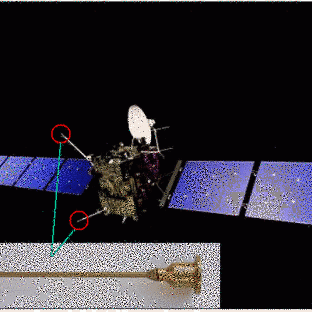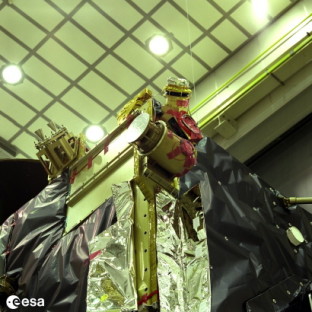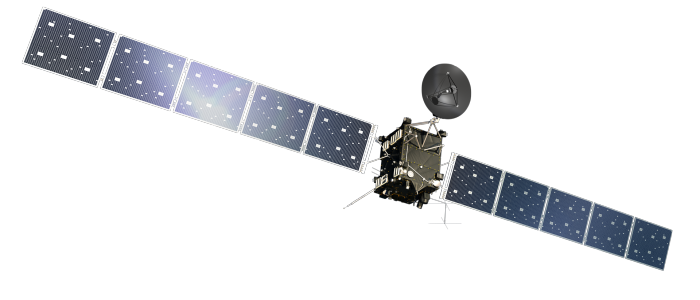Rosetta Near the Comet Churyumov-Gerasimenko
After more than ten years in space the comet chaser Rosetta is supposed to meet the target 6 August and will follow the comet for more than a year. After the rendezvous Rosetta will start the scientific investigations, investigations that will add much new knowledge about the comets that now and then visit our neighbour space. During the journey, the probe has had three Earth flyby, one Mars flyby, passed the Asteroids Belt two times, but also been in hibernation for 29 months. All manoeuvres in the intention to reach the comet, and follow him in 16 months.
After catching up with the comet Rosetta will slightly overtake and enter orbit from the ‘front’ of the comet, simultaneously they together move along the orbit around the Sun. Rosetta will carry out a complex series of manoeuvres to reduce the separation between the spacecraft and comet from around 100 to 25-30 km. From this close orbit, detailed mapping will allow scientists to determine the landing site for the mission’s Philae lander.
During these months the probe will investigate the comet in detail from the position over the surface.
Immediately prior to the deployment of Philae in November, Rosetta will come to within just 2.5 km of the comet’s nucleus.
However, several investigations from some of the instruments onboard during the long journey through space have already been carried out, passing the asteroid belt, with near contact with known asteroids like Steins and Lutetia and the Earth and Mars fly-bys.
Rosetta is a large international project, mainly European, but also with contribution from the United States.
Developing, building and managing of the spacecraft has involved several Nordic industrial companies, where the Finnish Patria has built the most visible part of the spacecraft; the bus.
Scientific Instruments From Sweden
The scientific instrument is mainly developed and built with the participating institutes, and interestingly, two of the instruments are from the Swedish Institute of Space Physics (IRF).
Langmuir Probe Instrument (LAP)

The Langmuir Probe at Rosetta. Credit: ESA/IRF
The Langmuir probe instrument (LAP), provided by IRF Uppsala, is a device to measure weak electric currents flowing between the spacecraft and the surrounding space. “Empty space” is never empty: it always contains a tenuous gas of electrically charged particles, known as a plasma. By measuring the current to the Langmuir probe while varying its potential, one can find out quantities like the density, temperature and flow speed of the plasma. As pressure is density times temperature, one measure the three fundamental properties of all weather stations: temperature, pressure and wind speed: hence the scientists sometimes call the instrument a “space weather station”.
The sensor itself is a titanium sphere 50 mm in diameter, looking goldish because of its titanium nitride coating.
Ion Composition Analyser (ICA)

One of the Ion Composition Analyser (ICA) placet at Rosetta. Credit: ESA/IRF
The Ion Composition Analyser (ICA) on board Rosetta is provided by IRF in Kiruna and is one of five sensors in the Rosetta Plasma Consortium (RPC). The primary objective of the RPC instruments is to study the plasma and wave environment of the comet and its interaction with the dust and gas materials. ICA measures the distribution function of positive ions, resolving the 3-D velocity distribution of cometary and solar wind ions with a mass resolution high enough to resolve the major species such as protons, helium, oxygen, molecular ions and heavy ion clusters (dusty plasma). The instrument weighs 2.0 kg.
Featured image: Credit ESA.
Look also at the link.


